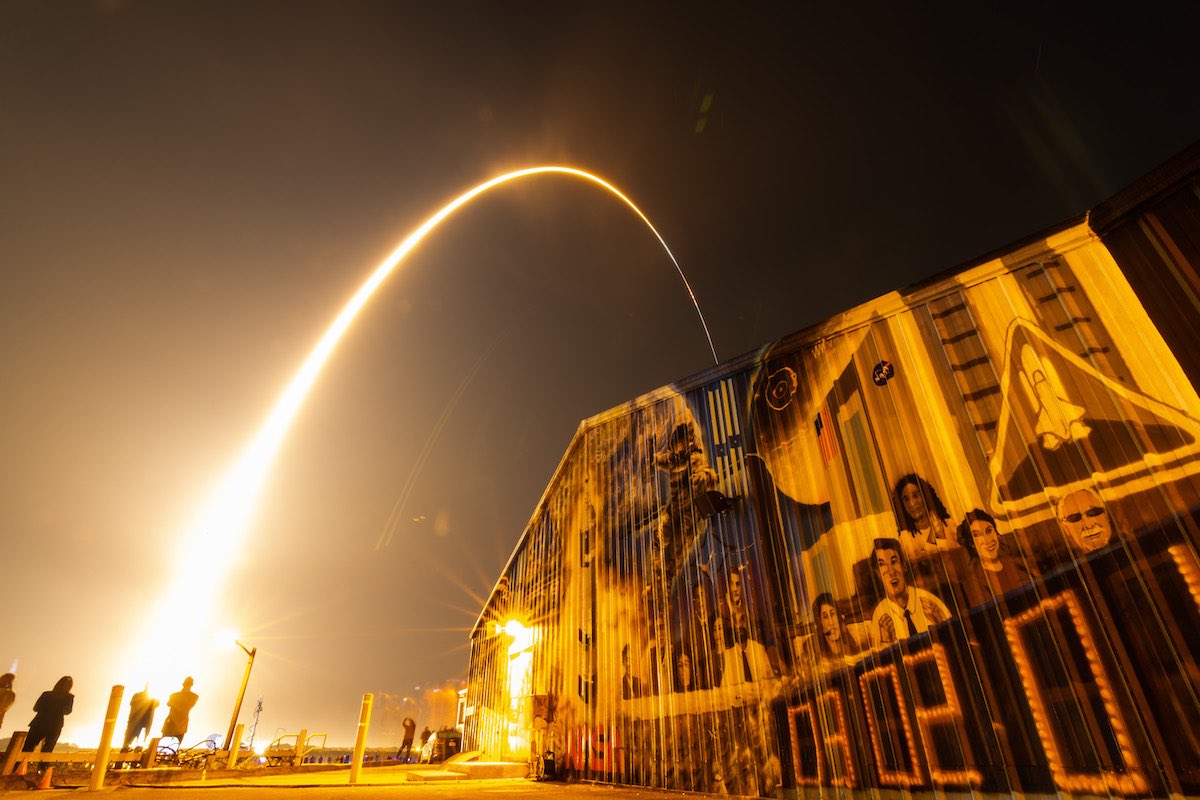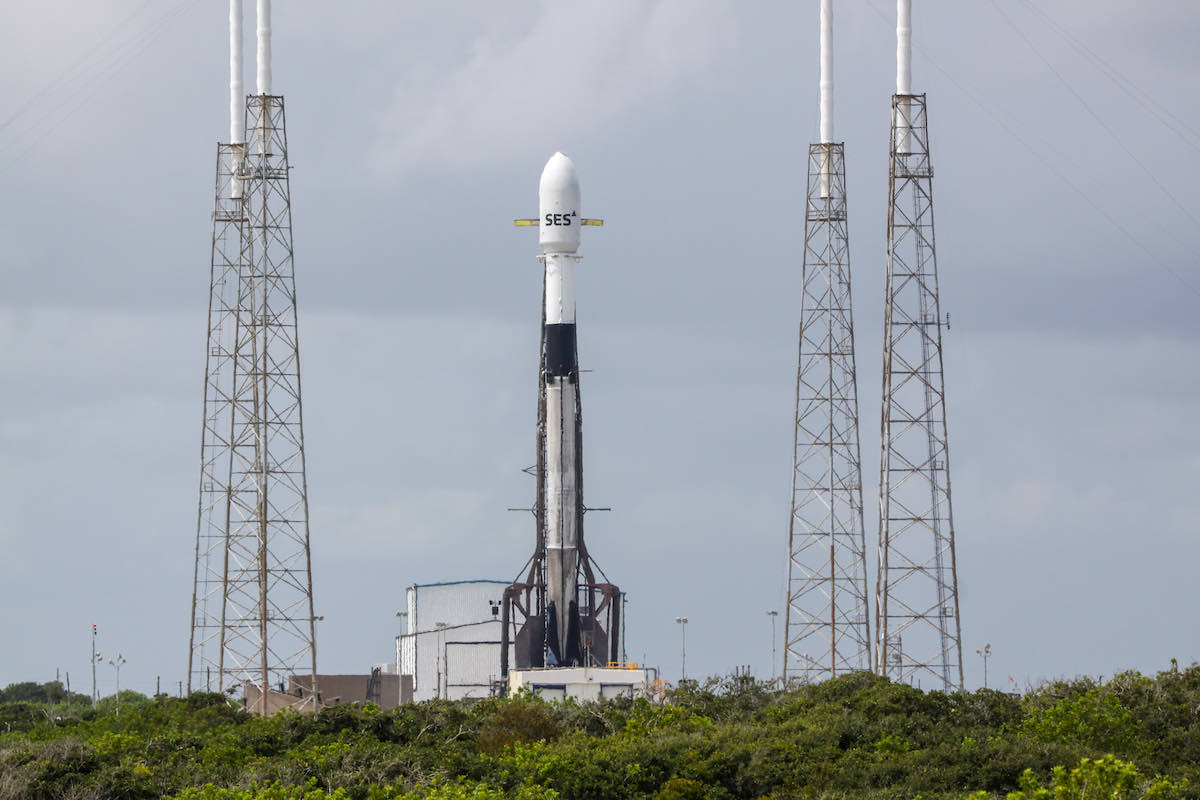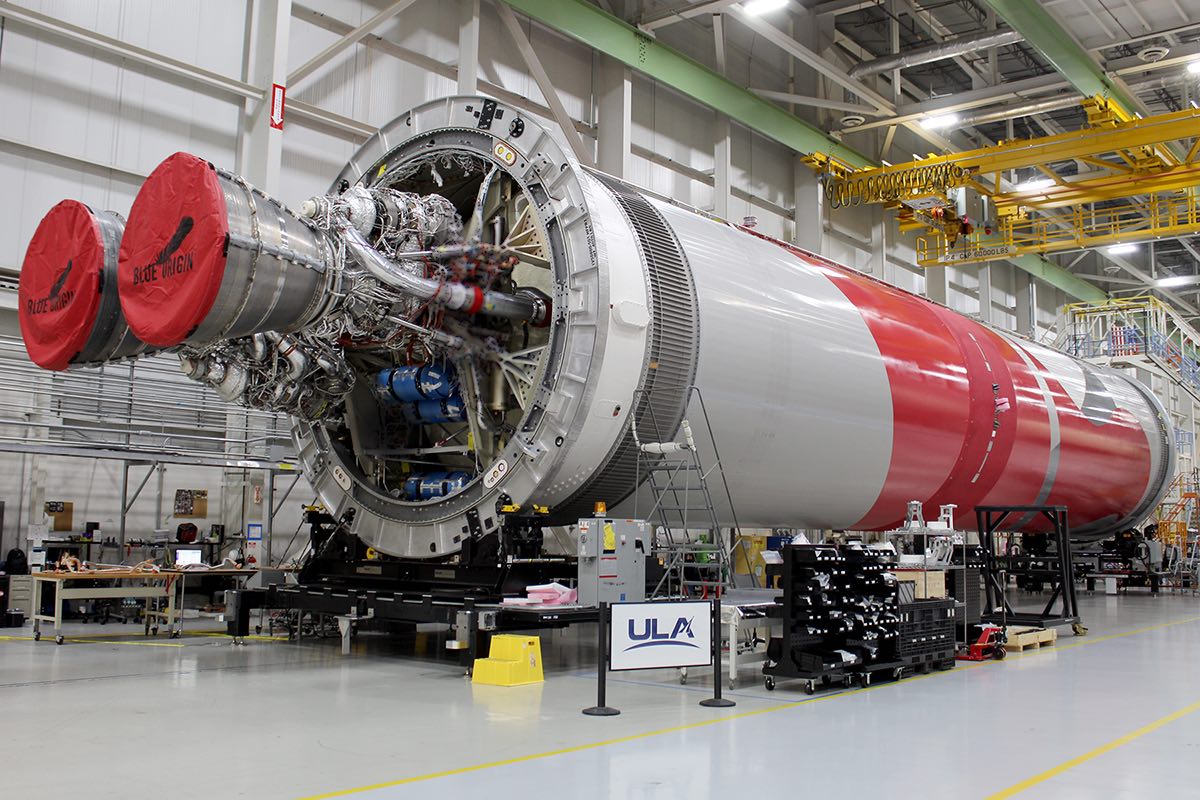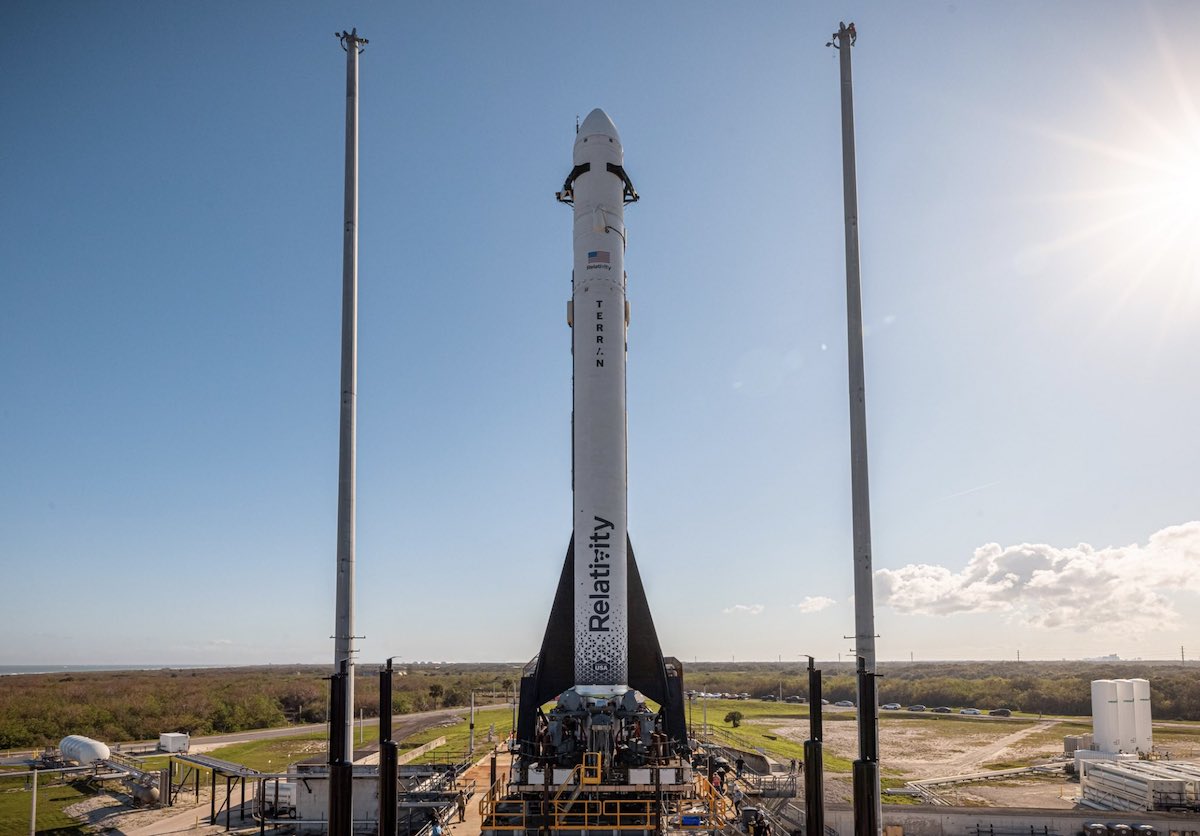Space News & Blog Articles
Military officials forecast 87 launches from Florida’s Space Coast in 2023
 NASA’s Space Launch System moon rocket streaks into the night sky over Kennedy Space Center on Nov. 16. Credit: Michael Cain / Spaceflight Now / Coldlife Photography
NASA’s Space Launch System moon rocket streaks into the night sky over Kennedy Space Center on Nov. 16. Credit: Michael Cain / Spaceflight Now / Coldlife Photography
The U.S. Space Force is preparing for as many as 87 launches from Florida’s Space Coast in 2023, including dozens more SpaceX missions and the expected debuts of United Launch Alliance’s Vulcan and Relativity’s Terran 1 rockets.
“We expect to have about 87 launches from the Cape in calendar year 2023,” said Lt. Col. Colin Mims, commander of the 1st Range Operations Squadron, which provides range safety support for launches from the Eastern Range at Cape Canaveral Space Force Station.
The busy 2023 follows a record-setting 2022 at Cape Canaveral. There were 57 orbital-class rockets that departed launch pads at Cape Canaveral Space Force Station and NASA’s Kennedy Space Center last year, a sharp increase over the previous record of 31 orbital launch attempts in 1966 and 2021.
SpaceX launched 48 of the 57 missions out of the Florida spaceport last year. United Launch Alliance added six flights with its Atlas 5 rocket, and NASA’s huge Space Launch System moon rocket aced its first test flight Nov. 16. Astra launched two flights of its light-class small satellite launcher in February and June, but both missions failed in their bids to reach orbit.
The U.S. Space Force runs the Eastern Range, which oversees public safety for launches out of Florida’s Space Coast. Space Launch Delta 45, formerly the 45th Space Wing, has upgraded infrastructure, streamlined operations, and encouraged rocket companies to switch to autonomous flight safety systems to help shorten the time needed between launches.
There were 16 space launches from the Eastern Range in 2019. The launch rate in 2022 more than tripled that number.
“I think it just shows the pace at which the commercial (demand) is growing,” Mims said. “I think it’s our geography here, being off of the coast, that we can launch into a polar orbit or an equatorial orbit, that’s very advantageous. And our ability to rapidly turn the pads and schedule launches quickly, that shows our ability or that has highlighted our ability to provide services to these launch service providers.”
Launches into polar orbit used to be the near-exclusive domain of Vandenberg Space Force Base in California, but the Eastern Range approved a SpaceX request to begin launching on a southern corridor from Cape Canaveral in 2020, the first polar orbit mission from Florida since 1969.
 Fifty-seven rockets bound for space departed from launch pads on Florida’s Space Coast in 2022, a sharp increase from previous years. Credit: Spaceflight Now
Fifty-seven rockets bound for space departed from launch pads on Florida’s Space Coast in 2022, a sharp increase from previous years. Credit: Spaceflight Now
“Three years ago … we would surge for every launch. It was a major ordeal,” said Col. Jason King, commander of the 45th Weather Squadron at Patrick Space Force Base and Cape Canaveral Space Force Station. “We’ve since then changed the mindset to where we’re operating more like an airport now. We call it a spaceport. So we don’t want to full-on surge for every launch attempt, and we want to change the mindset into where it’s pretty much normal operations.”
On Aug. 4, the Eastern Range supported two launches by ULA’s Atlas 5 rocket and SpaceX’s Falcon 9 just 12 hours and 39 minutes apart, the shortest duration between two space launches from the Space Coast since 1967.
On Dec. 16, the military team that runs the range was ready to accommodate two launches by SpaceX Falcon 9 rockets from different pads just 33 minutes apart. But SpaceX ended up delaying one of the missions to give priority to the other.
The demand for launch services is increasing in the United States. SpaceX alone aims to launch as many as 100 times this year, including flights out of Florida, California, and test flights of the Starship mega-rocket from South Texas. SpaceX hasn’t disclosed how many of those launches it will base out of Cape Canaveral, but the majority of the missions on the company’s 2023 manifest are expected to fly from Florida’s Space Coast.
“We’ve just begun to see the increase,” King said in a recent interview. “We estimate in the next probably two to three years we’ll have 100 launches here on the Eastern Range. But commercial launch service providers and commercial satellites are being launched at the quickest rate we’ve ever seen. So we just anticipate the launch rate to continue to increase.
“We’ve really trimmed the fat,” King said. “We’ve questioned our procedures. We’ve actually stopped doing some things that were not necessary, while at the same time keeping the Eastern Range as safe as possible.”
 File photo of a SpaceX Falcon 9 rocket on its launch pad at Cape Canaveral Space Force Station, Florida. Falcon 9s are expected to the most-launched rockets from Cape Canaveral again in 2023. Credit: Stephen Clark / Spaceflight Now
File photo of a SpaceX Falcon 9 rocket on its launch pad at Cape Canaveral Space Force Station, Florida. Falcon 9s are expected to the most-launched rockets from Cape Canaveral again in 2023. Credit: Stephen Clark / Spaceflight Now
“One of the biggest things that have gotten us to this point where we can have multiple launches in the same day, or within minutes of each other, is (reducing) the amount of equipment needed for some of these launches,” Mims said. “Contractors or launch service providers are now using a thing called automatic flight termination system. So that means that the the vehicle itself has an on-board suite of sensors that can ensure that the rocket is staying on its course, and if not, it will self-destruct … The mission is all about public safety and ensuring those rockets are going where they’re supposed to be going.”
“In addition to that, there’s a lot of other infrastructure that we’ve invested in,” said Lt. Col. David Schill, commander of 5th Space Launch Squadron, which supports national security launches from Cape Canaveral.
“Some of that infrastructure is as simple as roads and water deluge systems, but it’s also in a lot of the the partnerships with industry,” Schill said. “So they’re building additional hangar space and processing space, and allowing themselves multiple ways to process rockets simultaneously, so it’s not just limited to one hangar where they can process one rocket at a time. But they can do multiple hangars, multiple processing facilities, multiple launch pads, and that sort of construct is only going to continue to increase.”
The 45th Weather Squadron monitors weather conditions across the Cape Canaveral spaceport to ensure all parameters are acceptable for a rocket to launch safely. Lightning is a major constraint for launches from Florida. Meteorologists track cloud-to-ground and in-cloud lightning, and monitor the potential electrical charge within clouds that could cause lightning to strike a launch vehicle as it climbs through the atmosphere, a phenomenon known as rocket-triggered lightning.
King, the weather squadron’s commander, said the Space Force is working with universities to better understand the science of what causes a lightning strike. That could allow the weather team to relax the lightning rules for a rocket launch. King said the weather squadron at Cape Canaveral is set to receive a new weather radar.
“This is the cutting edge, just the new and best radar, specifically designed for launch operations,” King said.
SpaceX will start the 2023 schedule at Cape Canaveral with a Falcon 9 rocket launch set for 9:56 a.m. EST (1456 GMT) Tuesday, carrying 114 small satellites and micro-payloads into a polar orbit customers around the world. The mission, called Transporter 6, is SpaceX’s sixth dedicated small satellite rideshare launch.
The Falcon 9’s first stage booster will return to Landing Zone 1 at Cape Canaveral Space Force Station, targeting a propulsive vertical touchdown about eight-and-a-half minutes after liftoff. The booster will be making its 15th flight to space, tying a record for SpaceX’s fleet of reusable rockets.
 United Launch Alliance’s first flight-rated Vulcan rocket core stage inside the company’s factory in Decatur, Alabama, with two Blue Origin-built BE-4 engines delivered earlier this year. Credit: United Launch Alliance
United Launch Alliance’s first flight-rated Vulcan rocket core stage inside the company’s factory in Decatur, Alabama, with two Blue Origin-built BE-4 engines delivered earlier this year. Credit: United Launch Alliance
SpaceX plans to launch six to seven missions from Florida in January alone, including the launch of a Falcon Heavy rocket Jan. 12 from pad 39A at Kennedy Space Center. The Falcon Heavy, made by combining three Falcon 9 rocket cores together, will loft a pair of satellites into a high-altitude geosynchronous orbit for the Space Force.
Other Falcon 9 launches on tap for January from Florida include the next launch of 40 internet satellites for OneWeb, set for Jan. 8, and the launch of a GPS navigation satellite for the Space Force on Jan. 18. SpaceX also plans to launch more batches of Starlink internet satellites and the Spanish-owned Amazonas Nexus communications satellite before the end of the month.
The busy January will help SpaceX get out of the starting gate on its quest for up to 100 launches in 2023
SpaceX’s Falcon rocket flights from Florida this year include several crew launches for NASA, Axiom Space, and the all-private Polaris Dawn mission that aims to accomplish the first commercial spacewalk in Earth orbit. SpaceX has five Falcon Heavy missions on the books for 2023, all from Kennedy Space Center.
At least two new commercial launchers are slated to debut at Cape Canaveral this year.
United Launch Alliance’s new medium-to-heavy lift Vulcan rocket, which replaces its Atlas 5 and Delta 4 rocket families, could launch for the first time in the coming months. The rocket’s inaugural launch was delayed from last year as ULA awaited delivery of flight-ready BE-4 main engines from Blue Origin, Jeff Bezos’s space company.
In October, Blue Origin delivered the two BE-4 engines needed for the first Vulcan launch to ULA’s factory in Decatur, Alabama, where they were installed on the Vulcan’s main stage. The Vulcan core stage and Centaur upper stage will soon be delivered to Cape Canaveral for final integration and testing at the launch site.
The first Vulcan launch will haul into space a commercial moon lander built and owned by Astrobotic, plus two test platforms for Amazon’s planned Kuiper satellite internet network. A second Vulcan launch could occur later this year with Sierra Space’s first Dream Chaser cargo freighter for the International Space Station.
Relativity Space, a California-based startup founded in 2015, is also nearing its first orbital launch attempt. The company’s fully assembled Terran 1 rocket was rolled out to Launch Complex 16 at Cape Canaveral for the first time last month in preparation for final fueling tests and engine test-firings.
The Terran 1 rocket is designed to deliver small to medium-size payloads to space, with a lift capability of nearly a ton to a polar sun-synchronous orbit.
 Relativity Space’s Terran 1 rocket on its launch pad at Cape Canaveral Space Force Station. Credit: Relativity Space / Trevor Mahlmann
Relativity Space’s Terran 1 rocket on its launch pad at Cape Canaveral Space Force Station. Credit: Relativity Space / Trevor Mahlmann
Blue Origin said in early 2022 that the first test launch of its New Glenn rocket, which stands as tall as NASA’s SLS moon rocket at 322 feet (98 meters) in height, would be delayed from late 2022 until the fourth quarter of 2023. The company has not updated its schedule since last March, but industry officials now widely believe the New Glenn’s debut flight from Cape Canaveral Space Force Station won’t happen before 2024.
Aside from SpaceX’s rapid-fire launch cadence, and the inaugural flights of the Vulcan and Terran 1 launch vehicles, ULA plans around five flights with its Atlas 5 rocket this year from Cape Canaveral, plus one launch of a Delta 4-Heavy rocket for the National Reconnaissance Office.
ULA’s Atlas 5 missions will include the company’s launch of astronauts on Boeing Starliner crew capsule. The Atlas 5 rocket will share the same launch pad with the Vulcan rocket.
This email address is being protected from spambots. You need JavaScript enabled to view it. the author.
Follow Stephen Clark on Twitter: @StephenClark1.
When you subscribe to the SpaceZE News Feed, we will send you an e-mail when there are new updates on the site so you wouldn't miss them.

